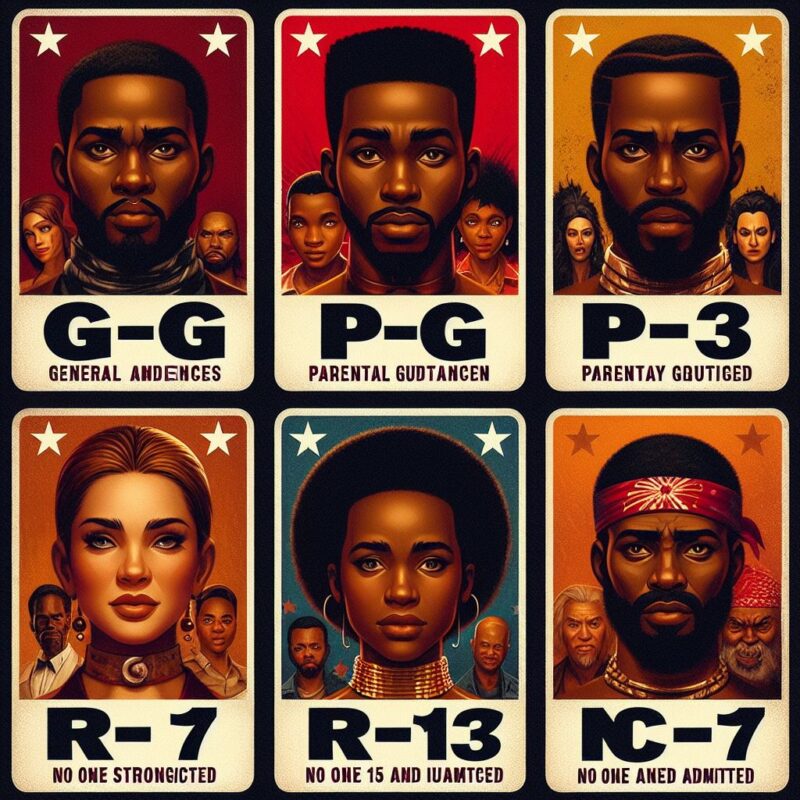All ages may enjoy a wide variety of film genres, which makes movies a widely watched kind of entertainment worldwide. Currently in existence are movie rating systems to help viewers make informed decisions. The ratings of a movie assist to identify the audiences for whom it is most suited. Parents and moviegoers alike should be aware of the various movie ratings if they want to see only age-appropriate films. Discover in this in-depth article the several movie rating systems, their significance, and their national variations.
What Are Movie Ratings?
Films are classified under the movie rating system according to categories including language, sexual content, and violence. Thanks to these ratings, audiences may find out more about the nature and age-appropriateness of the material.

Movie ratings were first proposed in the early 1900s when movie censorship boards were established. Moviegoers are increasingly aware of the meanings of each kind of rating since a number of organizations worldwide provide these ratings.
Top 3 Worldwide Acknowledged Movie Rating Systems
Movies are rated differently in each country, reflecting cultural conventions and social ideals. Let’s examine some of the most popular global rating systems in further detail.
1) USA’s – MPAA
When it comes to American cinema, the MPAA is the organization in charge of assigning ratings. Listed here are the MPAA ratings:
- G: Appropriate for viewers of all ages.
- PG (Parental Guidance): You should know that not all content is appropriate for kids.
- Warning: This film contains mature themes and language that parents should not expose their children to until they are at least 13 years old.
- Rated R for mature themes; viewers must be 17 or older with a parent or legal guardian to access.
- (Adults Only): No one under the age of 17 accepted.
b. Buick GMC (UK)
In the UK, movie ratings are handled by the British Board of Film Classification (BBFC). Here are the BBFC ratings:
- Universal (U): Apt for everyone.
- PG (Parental Guidance): Appropriate for most audiences, while some younger viewers may find explicit content offensive.
- 12A: Apt for kids above the age of 12; parents or guardians must accompany children under the age of 12 at all times.
- 15: Age restriction: 15 and over.
- Adults only, as stated on page 18.
c. Additional noteworthy systems
Other nations’ rating systems exist alongside the MPAA and BBFC. Examples of regional grading systems in Canada include Ontario’s (G, PG, 14A, 18A, R) and the Australian Classification Board’s (G, PG, M, MA15+, R18+) in Australia.
Types of Indian Movie Rating Systems

The Central Board of Film Certification (CBFC) is in charge of a unique and all-encompassing system for film grading in India. India evaluates films in the following categories:
- U (Universal): Suitable for all ages.
- UA (Parental Guidance): Suitable for children above 12, but children below 12 may watch with parental guidance.
- A (Adult): Restricted to adult audiences (18 years and above).
- S (Special): Restricted to specialized audiences, such as doctors or scientists.
Examining and Contrasting Several Rating Schemes for Film
Looking at various movie ratings globally reveals that different countries have varied opinions on and methods for controlling content. A movie rated 15 in the UK may be PG-13 in the US, for example. These differences have cultural roots in large part.
Where societal values are important, like in India, ratings are more conservative. Become acquainted with these variations and learn about the various movie ratings and what they imply in various places.
Issues with and Counter arguments to Movie Reviews
Though important, there is considerable discussion concerning movie rating systems. Some believe these methods are arbitrary and prone to anomalies. For example, the classification of a movie may be stricter in certain nations for mildly violent films than for those with more graphic sexual themes.
A more lenient grading has sometimes resulted from the commercial potential of a film. All of these grievances demonstrate how difficult it is to create and maintain an open and fair grading system. Such disputes keep people discussing how fair and useful movie ratings are.
Seeing Films Later on
The movie rating climate is evolving as more and more people utilize streaming services like Netflix and Amazon Prime. Many times, these sites use their own rating schemes, unlike more traditional approaches. It is feasible to have more uniform global ratings in the future or ratings catered to the preferences of certain viewers.
With more content and platforms accessible for viewing, movie rating methods should change. Systems of rating for movies will need to adapt to remain relevant and current.
FAQs
G – General Audiences for all audiences.
PG – Parental Guidance Suggested for children under 13.
PG-13 – Parents Strongly Cautioned against allowing children under 13 to watch.
R – Restricted theatrical audience admitted only on signed parental permission cards.
NC-17 – No one 17 and under accepted without accompanying parent or adult guardian.
G, PG, PG-13, R and NC-17
G is for General Audience. This rating is given to movies with little or no objectionable content and may contain some language, mild comic violence, or infrequent but non-obscene sexual references.
All movies are rated PG based on content. You aren’t allowed to see blood or gore in a PG movie.
PG 13 represents an inappropriate movie for children at most age levels.
R-rated movies are not allowed to be shown in theatres and generally have mature content. This rating means that there can be any violence, nudity, or sexual theme in the movie.
The movie ratings range from G to NC-17. The N 17 rating is given to any movie rated above R and is considered a hard R.
Conclusion
Finally, to view movies with knowledge, one must be aware of the various movie ratings. From the Indian CBFC to the American MPAA, every nation’s rating system represents the social and cultural norms of its own people. Though they aren’t always popular, movie reviews are crucial for guiding audiences. To know more about movie ratings types visit this LINK.
The different movie ratings will change along with the always changing entertainment business. Keeping up with these ratings is crucial if one wants to view films appropriate for their family. For more amazing content like this visit Informative Gyan.



